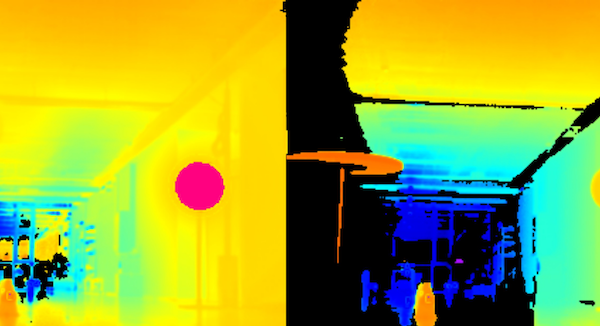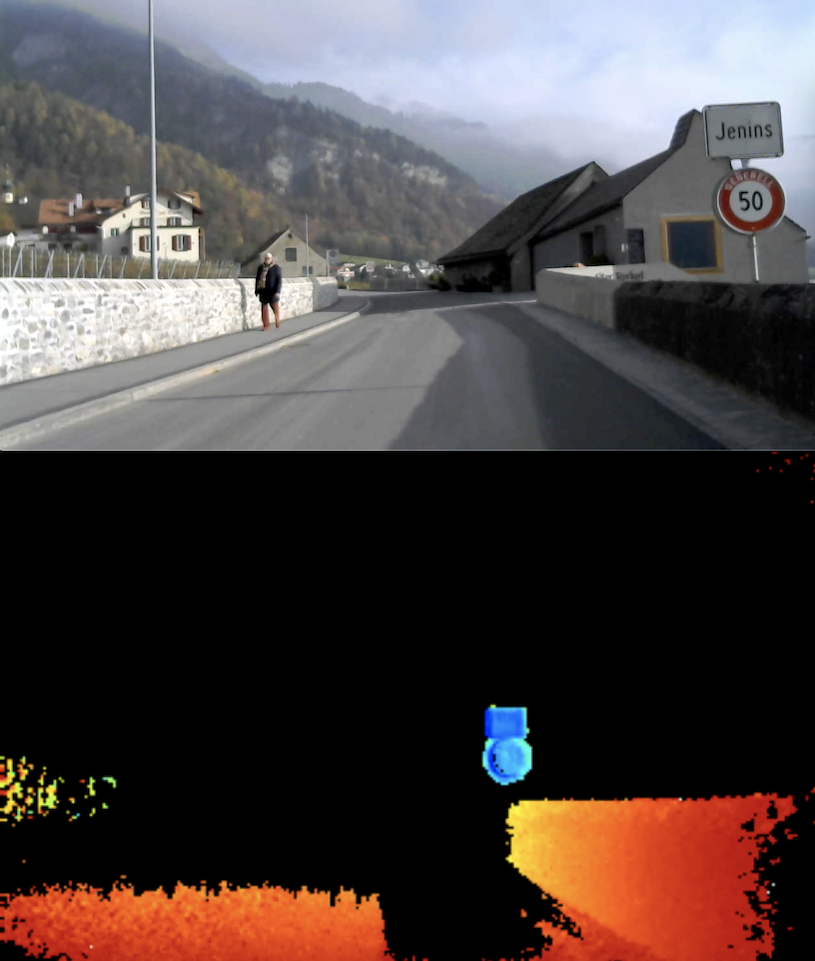Lens
The most critical issue of the lens is straylight. A standard lens, which is typically used for megapixel imagers, will provide disastrous results. The reason is because in a TOF camera an ultra bright illumination source (several watts) is very close to the imager lens. An object close to the camera or a highly reflective object like a road sign will create lots of straylight which makes distance measurement impossible.
The image below left shows an image taken with a unsuitable lens. The road sign, the red spot in the image, reflects a lot of the illumination back to the camera. Due to the high amount of light from the road sign, objects farther away may be incorrect due to straylight. E.g. the back wall appears closer than it really is. It is shown in yellowish color which represents a short distance.
On the right side of the picture is the same scene with an excellent TOF lens. The back wall is dark blue which represents the correct distance. Thus, make sure your imager lens is designed and manufactured for TOF applications. It means they should have a suitable, high performance anti-reflection coating (ARC) matching the wavelength being used and a lens mount design which absorbs straylight with traps.


Rules of thumb:
- Lens transmission at operating wavelength should be better than 93% by to excellent AR coating
- Low lens MTF of approx. 20 lp/mm can be accepted because TOF pixels are rather large
